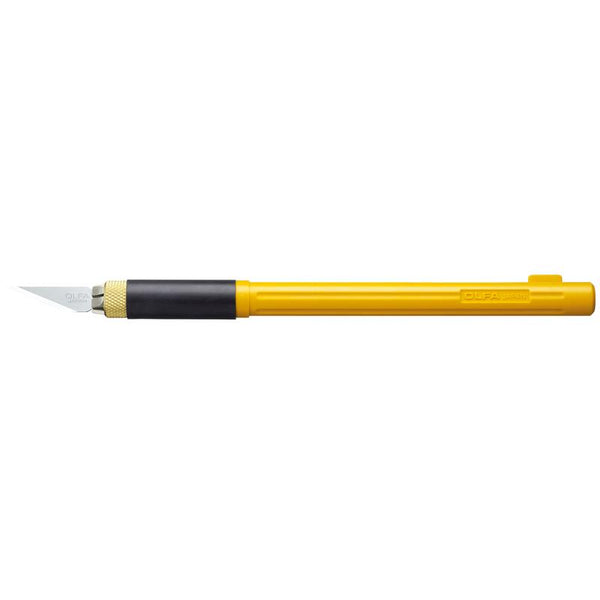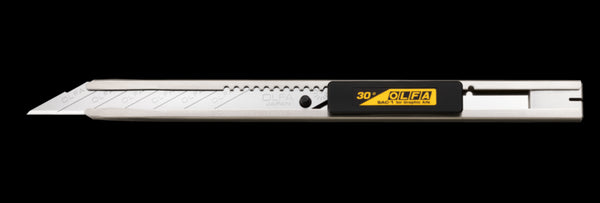
OLFA - Michael Velliquette Interview

----------------
Please tell us a little bit about yourself – where you grew up, when your interest in art (and particularly paper art) began, what schools you attended to become proficient in this skill.
I grew up in the 70’s and 80’s on the Gulf Coast of Florida in a little beach town called Bradenton. My childhood was free-wheeling far as play and exploration—my folks were very supportive about letting me discover and indulge my creative whims. My interest in making art probably started during that time, though I didn’t think about it that way per se. I just I loved drawing and making things out of Play-Doh. I had a rich interior world that I filled with endless homemade props and costumes made from whatever I could find—string, cardboard, glue, paper, aluminum foil…
Sometime during my undergrad at Florida State University, I discovered the Fine Arts Department. Eventually I declared art as my major and ultimately achieved my Bachelor of Fine Arts. I then went on to get my Master of Fine Arts at the University of Wisconsin-Madison. Mixed media sculpture was my area of focus for both of my formal degrees, simply meaning I made objects with lots of different kinds of materials.
I developed my current paper sculptures several years after finishing my degrees, simply from working as an artist and exploring a variety of materials and processes. I’ve always used paper in my work, but it became my primary material about 15 years ago. Most of what I do now is self-taught as far as techniques, though I do absorb a lot of information studying other paper crafting traditions, and I do a great deal of visual research on the paper arts as well as architecture and other decorative art forms.
Though there isn’t an obvious material connection between what I made as an art student and what I am making now, there are some formal threads that tie my work together across the span of my life. I’ve always been interested in ornamentation and doing more to things visually than is really is necessary. I also have always loved a multiplicity of patterns and shapes. I try to create what I describe as an “aesthetic of abundance” with the things I make—I like the experience of having lots to look at, it makes my eyes feel happy and full. It’s a sensibility I also like to share with the people who look at my work.
What tools do you primarily use for your work, OLFA and non OLFA?
My basic tools are scissors, art knives, and glue. I can do almost everything with just those items. My new favorite art knives are the OLFA AK-4 and the SAC-1 graphic cutter. The AK-4 is beautifully balanced and has a great hand weight. The SAC-1 is the opposite, totally light weight but fiercely sharp! As far as scissors I’ve used the KAI 5000 series forever, they are very high-quality blades and never seem to dull despite literally thousands of hours of use. I use LINECO brand PVA glue which is Ph neutral, quick drying, and flexible, along with a needle-tip glue bottle for precision.
Aside from those basics I also have a variety of tools for bookmaking, ceramics and quilling that I use to shape and model the paper forms I build.
Your work will probably be new to our readers. Walk us through the steps you use for creating a project. Do you start with base paper and build on from there? How heavy is the paper?
I start out every piece by first choosing the paper. I prefer papers rated as “cover stock” in the 250-350 gsm range. For folks who aren’t paper people, it’s like what business cards are made from. I order from a specialty paper distributor in Brooklyn and it comes in large sheets measuring 25” x 40”. I’ve recently been using G.F. Smith’s “Colorplan” paper line. They are very high-quality cover stocks in an astonishing range of colors. I’ve also started working with a line of metallic papers produced by Arjowiggins out of their “Curious Collection” While I’m researching paper I’m also thinking about color. My works are monochromatic, and color effects mood, so I have to consider what color I want to be staring at during the endless hours of constructing one of my pieces!
After I have decided on the paper type and color I sit down and just start cutting out shapes and gluing them together. I generally start making a series of layered concentric circles, they start very small, just something I can hold in my hand.
After a couple of days I have made a more complex three-dimensional form, which becomes the core of the work, meaning the part I place in the middle. I then will start building the piece out from there, making more paper components that respond in form and style to the motifs developed in the first one. At a certain point I will also decide on the scale the of finished work and so I will create the base and start arranging and gluing the components onto it.
I improvise almost entirely along the way. I like not knowing what they will ultimately look like. But I often work in repetition and symmetry and will make similar components. So, I will make sketches to help me remember the steps.
I keep working on it until it feels sufficiently full and I have covered the entire base. It’s a long and labor-intensive process—my works take between 300-500 hours to complete, and I can only make about 3-4 pieces per year.
When you do an outdoor installation, what keeps weather from affecting the finished work?
It’s been many years since I’ve done an outdoor installation entirely with paper, and those tended to be site-specific ephemeral works which were only meant to last for a few hours. My last paper installation piece was in a large storefront window last year and I deliberately chose a material called “mirror board” which has a very tough coating that is impervious to fading. I have also had the opportunity to create some permanent public artworks which are made from very durable materials designed to last decades like aluminum and high-density foam.
Your work has the look of a 3D printer or even a plaster cast. How often do you have to explain that it’s really made from paper?
Hah, all the time but I don’t mind at all. It means people think they are so complex they must be made by machines. It makes it even more thrilling to find out they are entirely hand made from paper. It really makes viewers take a second look and reimagine what paper can be, which for me is part of the point. I like it when we can slow down, take a deep long look, and see things differently.
When you do an installation at a museum or gallery, how long is it usually shown? Do your pieces rotate through other facilities?
That depends! Generally, art exhibitions run from four to six weeks. My last solo exhibition was at the David Shelton Gallery in Houston, and that was up for almost eight weeks because of the pandemic and the way everything slowed down. When I have a solo exhibition usually the same work stays on view the entire time. But I do have works that have traveled to multiple locations for different exhibitions, in fact a few years ago a series of my paper serpents traveled between Rome, Singapore and Tokyo.
How often do you do private art for a collector?
I have been fortunate to place my work in numerous private collections over the years, and on occasion will take on private commissions.
Where could our readers currently see your work on display?
I have work in a couple of exhibitions this summer—at the Brick Store Museum in Kennebunk, Maine and here at the Houston Center for Contemporary Craft where I am a visiting artist through the end of August. But if folks want to see what I am up to at any given moment, Instagram @michaelvelliquette is where I am most active as far as posting photos and videos of what I am working on in the studio.
When you teach classes, what types of students attend? Are they primarily professional artists, architectural students, or even lay people with an interest? Where do you teach?
I teach a variety of courses and workshops devoted to the paper arts through museums and craft schools all over the country, and all sorts of individuals have taken my classes! One of the wonderful things about working with paper is it’s a material people know because they handle it all day long. So, it’s not as intimidating as other craft forms which require more specialized tools and materials. It doesn’t take much to get people to pick up scissors and paper and to start exploring!
How would other artists lay out their own path in this career?
I belong to a wonderful professional organization called the Paper Artist Collective. I often refer students and beginners to look at their website and follow their Instagram feed. PAC is a global organization of paper artists and designers working in a wide range of paper art forms—paper cutting, folding, quilling, illustration, etc. What you quickly see it that the common denominator amongst all these artists is their devotion to their work. So primarily I would say it’s important to put in the time making and developing your work—only you can do that. At the same time it’s never been easier to share what you do and find like-minded artists. I think this combination of making your work as well as building a community around it is key to developing a career.
Do you ever sit down and create with no purpose in mind?
Rarely these days! I’m very entrenched in my current body of work, so when I get to the studio each day, I always know what I will be working on. My art practice does involve a lot of improvisation which allows me to explore and experiment all the time, and so I am constantly discovering new techniques and ways of working.
What other hobbies do you enjoy?
I think a lot of artists will tell you that their work is also their hobby, and I’m no different in that regard. I am an admitted workaholic. I do like all the standard “hobby” things such as cooking, gardening, and travel, and I have been practicing yoga for almost thirty years. But, if I have any spare time I always think about going to the studio before doing anything else.
Tell us about your experience as an artist in residence at the Houston Center for Contemporary Craft. How were you selected? Was the space open to the public so they could see you work and ask questions? How long were you there? Was the work intended to remain at the center once you were done?
I’m still currently an Artist Resident here at the Houston Center for Contemporary Craft. I started in June and am here through the end of August. The residency program is designed to offer time and space for craft artists to focus on their creative work and interact with the public. Yes, visitors have the unique opportunity to enter the artists’ studios and watch the artists at work. In turn, the artists receive a unique opportunity to gain exposure, make connections with the Houston community, and help educate the public about craft. The work I create during the residency won’t necessarily remain here permanently when I’m finished, though a few pieces will be on exhibit this fall.
Where can our readers connect with you and follow your work?
As I mentioned, Instagram is where I am most active. I share lots of photos and videos of works in process as well as the kinds of things I look at which inspire my work. I also maintain my website, which is more of an archive of past projects.
What’s next for you?
In terms of exhibitions I just shipped five sculptures off to Korea where they’ll be part of the Cheongju Craft Biennale this Fall 2021. As far as my work goes, it’s always evolving and changing, so I’m as excited to see what comes next as anyone!




















